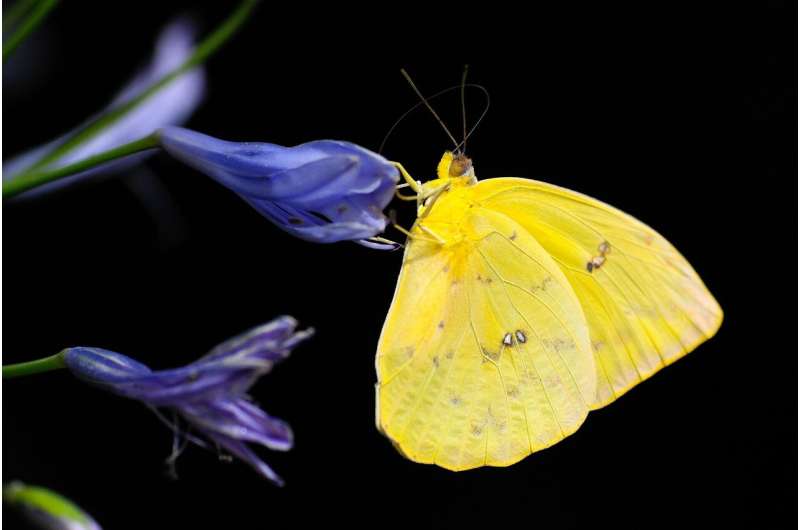Butterflies hedge their bets when times get tough

Understanding how organisms deal with an uncertain future may help identify which species are most vulnerable to climate change and which are best at managing the risk. In a paper published recently in the journal Evolution, Macquarie University ARC Future Fellow Associate Professor Darrell Kemp reveals that no single strategy may prove "best" under such circumstances.
Associate Professor Kemp studied how juvenile grass yellow butterflies, Eurema hecabe, respond when growing up in environments of plenty versus scarcity. This species is notable for the massive numbers of larvae that become stranded upon defoliated hostplants as the tropical wet season draws to a close. Such individuals must choose between maturing prematurely versus delaying maturation in the hope that the hostplant will regrow and their food source return. The best choice will depend on whether there is late-season rainfall, but that is impossible for them to predict.
This study revealed striking variation in the butterflies' response to food stress. Whereas some individuals pupated at the earliest opportunity—thereby condemning themselves to life as a small adult—others were prepared to stick it out under food scarcity for up to 15 additional days. Importantly, the willingness to gamble on the future varied according to genetic lineage, thereby revealing that genes determine risk acceptance in this species.
"This finding points to evolutionary bet-hedging," says Associate Professor Kemp. "Unpredictability of the natural environment means that, similar to rock-paper-scissors, no single developmental strategy can ultimately come to dominate across the population."
Nearly 1000 laboratory-bred individuals from a diversity of genetic backgrounds were needed to illustrate this effect.
Associate Professor Kemp says the implications of this research are potentially far-reaching because many organisms are expected to face greater environmental variability under climate change.
"It's an intriguing proof of concept for how an unforeseeable future may foster the coexistence of diverse evolutionary solutions. Species that naturally face such uncertainty should be better equipped to handle variation in the climate if—as in Eurema butterflies—the ability to do so already resides within their gene pool."
More information: Darrell J. Kemp. Genotype‐environment interaction reveals varied developmental responses to unpredictable host phenology in a tropical insect, Evolution (2021). DOI: 10.1111/evo.14218
Journal information: Evolution
Provided by Macquarie University



















